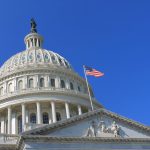Published February 27, 2013
The White House has argued that the March 1 sequester of federal spending — a cut of approximately 5 percent from the domestic-spending programs covered by the sequester requirement, along with 8 percent cuts to defense programs — will bring about the most dire of consequences. According to the president, “this meat-cleaver approach…will jeopardize our military readiness [and] eviscerate job-creating investments in education and energy and medical research.”
Maybe more alarmingly, the White House’s Office of Management and Budget issued a press release earlier this month claiming that the cuts in federal spending “could” force reductions in food inspections, which “could” lead to outbreaks of more food-borne bacteria, such as E. coli. Administration officials and their allies are making similarly alarming claims regarding what “could” happen to workplace safety, law enforcement, and education.
It seems clear that the administration has the capacity to make sequestration’s impact excessively unpleasant, and these statements could make one wonder whether the administration is determined to do so. But does a sequester have to be disastrous? Could the White House wield the scheduled cuts in such a way as to minimize the impact felt by the American people? Our experience inside the executive branch suggests that this is indeed the case: The administration could have prepared for the sequester in ways that would steer cuts toward less sensitive programs and activities. In fact, it still has the capacity to adjust some, although certainly not all, of the ways in which the sequester is applied.
Let’s start with the big picture. The total amount of the sequester’s cuts — $85 billion in 2013 — is just 2.4 percent of a $3.6 trillion budget. Even with the cuts, total spending in 2013 will exceed what was spent in 2012. Indeed, federal spending has been roughly $600 billion higher during the last four years than it was in 2008, and the sequester will hardly offset that overall increase. The size of the sequester barely exceeds the $80 billion or so of new spending that was recently appropriated for Hurricane Sandy relief.
The administration argues that the impact of the cuts will be magnified because we are already five months into the fiscal year, so instead of a 5 percent cut in domestic accounts over a full year, agencies and departments will have to cut 9 percent over the final seven months of the year.
This is indeed a problem, but it is a problem of the White House’s making. All of Washington has known for a year and a half that there was a good chance the sequester would be implemented in early 2013. The president even publicly threatened to veto attempts to undo it. And yet the administration apparently prevented federal agencies from preparing for it. Last July, the OMB sent a memorandum to the agencies instructing them to proceed with “normal spending and operations” in 2013 because there was plenty of time to avoid the sequester. The budget office could have told senior managers to begin contingency planning for reduced budgets. Instead, they insisted there would be no cuts, and, while some federal officials appear to have prepared prudently anyway, other federal officials overspent early in the year, making the sequester’s effects more severe.
In explaining those effects, the administration points out, correctly, that the law requires across-the-board cuts of all non-exempt budget accounts. As stated in the law, the cuts are to be applied uniformly to all “programs, projects and activities within a budget account,” and what constitutes a “budget account” as well as “programs, projects, and activities” is supposed to be found in the appropriations acts passed by Congress and their accompanying reports. But these acts and reports leave far more to administrative interpretation and discretion than the president’s remarks and OMB press releases would suggest.
In nearly all agencies, within various budget accounts, it is possible to impose deeper cuts on administrative functions and non-essential grant-making while leaving front-line service provision intact. For instance, in the Food and Drug Administration, the budget account for food safety includes both direct public-health-protection efforts and administrative functions. A responsible step would be to order agencies to tilt the cuts toward non-essential spending within budget accounts as much as possible.
Moreover, Congress generally provides agencies with the ability to transfer some amount of funds between appropriated accounts. Those authorities are not rescinded by the sequester, so the administration also has the ability to move funding from less sensitive to more sensitive accounts if it chooses to do so. For instance, in HHS, the law allows the secretary to transfer up to 1 percent of total appropriated funds, or about $750 million, among accounts. Those funds could be used to eliminate many short-term service problems. Congress might also consider expanding such transfer authority during this fiscal year to allow the administration to move even larger sums to sensitive accounts.
The sequester is most worrisome for its effects on national security. House Republicans were right to propose and pass alternative cuts last year for this reason, although the Senate has failed to take them up. But even here, there are administrative options for mitigating the sequester’s impact. Specifically, Republicans should push for maximum flexibility for moving the cuts within the Department of Defense to subaccounts that can be replenished later, such as long-term equipment upgrades, and wherever possible away from operations subaccounts that are directly related to short-term readiness.
In dealing with the sequester, the administration appears to favor the “Washington Monument” strategy — making all cuts as painful and prominent as possible for maximum political leverage. This is a reprise of the playbook used to great effect by President Bill Clinton against Speaker Newt Gingrich in the 1990s. But the 1990s showdown was a confrontation over a full government shutdown. When the sequester hits next month, the federal government will continue full operations and, with some creativity, could do so with little discernible drop in public services.
In the hands of a president committed to responsible deficit reduction, sequestration could be a powerful tool for good. The sequester that the president and his team proposed is a blunt instrument that is far less desirable than sensibly targeted cuts, but that is no reason to administer it irresponsibly.
James C. Capretta, a senior fellow at the Ethics and Public Policy Center and a visiting fellow at the American Enterprise Institute, was an associate director at the OMB. Tevi Troy, a senior fellow at Hudson Institute, is a former senior White House and HHS official.






